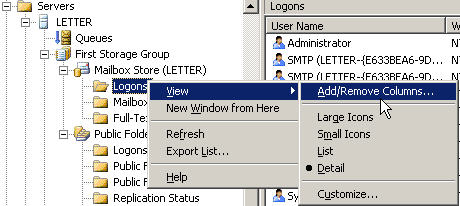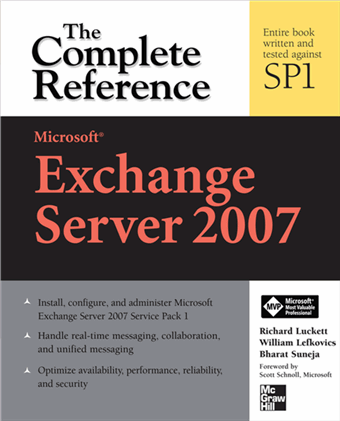Script: Listing Distribution Groups a recipient is a member of
Posted by Bharat Suneja at 7:36 AM
However, how do we get all Distribution Groups a user, group, or contact is a member of? There's no equivalent cmdlet that can list a recipient's distribution group memberships using the shell. From the AD side, a recipient's memberOf attribute is a back-linked attribute, which I briefly talked about in memberOf Attribute can now be used in OPATH filters!. A group's membership is stored in the group's member attribute.
In the following command/script (what's the boundary between a command and a script?? when do a bunch of commands become a script?), we look at all distribution groups in AD, look at each member and determine if it matches the one we're looking for.
$contact = get-contact "[email protected]"; Get-DistributionGroup | foreach {$dg = $_ ; write-host "Looking at: "
$dg; Get-DistributionGroupMember $dg | foreach {if ($_.identity -like $contact.identity) {"Member of : " + $dg} }}
Using the ADSI provider
The shell can also look at the AD objects natively using the ADSI provider. It's not as friendly or easy to use (as a native AD provider for Powershell would probably be), but it's a huge improvement over VBScript. There's no need to grab AD objects into ADO recordsets— that part is taken care of by Powershell.
Here's one way to do this using the ADSI provider:
$dn = "LDAP://" + (Get-Contact [email protected]).distinguishedName; $foo=[ADSI]$dn; $foo.memberOf | foreach {$dg = $_; get-distributiongroup $dg}
What it does: Uses the ADSI provider to get list of all groups a recipient is a member of, determines if the group is a Distribution or Security group, outputs names of Distribution Groups.
Usage:
.\Get-DGMembership.ps1 [email protected]
.\Get-DGMembership.ps1 [email protected] [email protected]
Labels: AD/LDAP, Administration, Exchange Server 2007, Exchange Shell, Scripting, Scripts

 Exchangepedia Blog is read by visitors from all 50 US States and 150 countries world-wide
Exchangepedia Blog is read by visitors from all 50 US States and 150 countries world-wide










